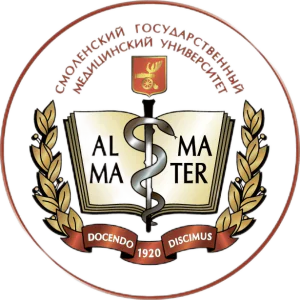Development of an anatomical breast phantom from polyvinyl chloride plastisol with lesions of various shape, elasticity and echogenicity for teaching ultrasound examination
Denis Leonov
1, 2
,
José Francisco Silva Costa Júnior
4
,
Anastasia Nasibullina
1, 2
,
Olga Tarasova
5
,
Kristina Pashinceva
6
,
Natalia Vetsheva
7
,
Julia Bulgakova
1, 2
,
Nicholas Kulberg
8
,
Alexey Borsukov
3
,
Manob Jyoti Saikia
9
4
Brazilian Air Force Academy, Pirassununga, Brazil
|
9
Department of Electrical Engineering, University of North Florida, Jacksonville, USA
|
Publication type: Journal Article
Publication date: 2023-04-26
scimago Q2
wos Q2
SJR: 0.658
CiteScore: 5.4
Impact factor: 2.3
ISSN: 18616410, 18616429
PubMed ID:
37099215
Computer Science Applications
General Medicine
Computer Graphics and Computer-Aided Design
Biomedical Engineering
Surgery
Computer Vision and Pattern Recognition
Health Informatics
Radiology, Nuclear Medicine and imaging
Abstract
The WHO reported an increasing trend in the number of new cases of breast cancer, making it the most prevalent cancer in the world. This fact necessitates the availability of highly qualified ultrasonographers, which can be achieved by the widespread implementation of training phantoms. The goal of the present work is to develop and test an inexpensive, accessible, and reproducible technology for creating an anatomical breast phantom for practicing ultrasound diagnostic skills in grayscale and elastography imaging, as well as ultrasound-guided biopsy sampling. We used FDM 3D printer and PLA plastic for printing an anatomical breast mold. We made a phantom using a mixture of polyvinyl chloride plastisol, graphite powder, and metallic glitter to simulate soft tissues and lesions. Various degrees of elasticity were imparted using plastisols of stiffness ranging from 3 to 17 on the Shore scale. The lesions were shaped by hand. The materials and methods used are easily accessible and reproducible. Using the proposed technology, we have developed and tested a basic, differential, and elastographic versions of the breast phantom. The three versions of the phantom are anatomical and intended for use in medical education: the basic version is for practicing primary hand–eye coordination skills; the differential one is for practicing the differential diagnosis skills; the elastographic version helps developing the skills needed for assessing the stiffness of tissues. The proposed technology allows the creation of breast phantoms for practicing hand–eye coordination and develop the critical skills for navigation and assessment of the shape, margins, and size of the lesion, as well as performing an ultrasound-guided biopsy. It is cost-effective, reproducible, and easily implementable, and could be instrumental in generating ultrasonographers with crucial skills for accurate diagnosis of breast cancer, especially in low-resource settings.
Found
Nothing found, try to update filter.
Found
Nothing found, try to update filter.
Top-30
Journals
|
1
2
3
4
5
|
|
|
Bio-Medical Engineering
5 publications, 35.71%
|
|
|
Digital Diagnostics
2 publications, 14.29%
|
|
|
Kazan medical journal
1 publication, 7.14%
|
|
|
International journal of computer assisted radiology and surgery
1 publication, 7.14%
|
|
|
Radiography
1 publication, 7.14%
|
|
|
Polymers
1 publication, 7.14%
|
|
|
Sensors
1 publication, 7.14%
|
|
|
Physica Medica
1 publication, 7.14%
|
|
|
Physical and Engineering Sciences in Medicine
1 publication, 7.14%
|
|
|
1
2
3
4
5
|
Publishers
|
1
2
3
4
5
6
7
|
|
|
Springer Nature
7 publications, 50%
|
|
|
Eco-Vector LLC
3 publications, 21.43%
|
|
|
Elsevier
2 publications, 14.29%
|
|
|
MDPI
2 publications, 14.29%
|
|
|
1
2
3
4
5
6
7
|
- We do not take into account publications without a DOI.
- Statistics recalculated weekly.
Are you a researcher?
Create a profile to get free access to personal recommendations for colleagues and new articles.
Metrics
14
Total citations:
14
Citations from 2024:
13
(92%)
Cite this
GOST |
RIS |
BibTex
Cite this
GOST
Copy
Leonov D. et al. Development of an anatomical breast phantom from polyvinyl chloride plastisol with lesions of various shape, elasticity and echogenicity for teaching ultrasound examination // International journal of computer assisted radiology and surgery. 2023. Vol. 19. No. 1.
GOST all authors (up to 50)
Copy
Leonov D., Venidiktova D., Costa Júnior J. F. S., Nasibullina A., Tarasova O., Pashinceva K., Vetsheva N., Bulgakova J., Kulberg N., Borsukov A., Saikia M. J. Development of an anatomical breast phantom from polyvinyl chloride plastisol with lesions of various shape, elasticity and echogenicity for teaching ultrasound examination // International journal of computer assisted radiology and surgery. 2023. Vol. 19. No. 1.
Cite this
RIS
Copy
TY - JOUR
DO - 10.1007/s11548-023-02911-4
UR - https://doi.org/10.1007/s11548-023-02911-4
TI - Development of an anatomical breast phantom from polyvinyl chloride plastisol with lesions of various shape, elasticity and echogenicity for teaching ultrasound examination
T2 - International journal of computer assisted radiology and surgery
AU - Leonov, Denis
AU - Venidiktova, Daria
AU - Costa Júnior, José Francisco Silva
AU - Nasibullina, Anastasia
AU - Tarasova, Olga
AU - Pashinceva, Kristina
AU - Vetsheva, Natalia
AU - Bulgakova, Julia
AU - Kulberg, Nicholas
AU - Borsukov, Alexey
AU - Saikia, Manob Jyoti
PY - 2023
DA - 2023/04/26
PB - Springer Nature
IS - 1
VL - 19
PMID - 37099215
SN - 1861-6410
SN - 1861-6429
ER -
Cite this
BibTex (up to 50 authors)
Copy
@article{2023_Leonov,
author = {Denis Leonov and Daria Venidiktova and José Francisco Silva Costa Júnior and Anastasia Nasibullina and Olga Tarasova and Kristina Pashinceva and Natalia Vetsheva and Julia Bulgakova and Nicholas Kulberg and Alexey Borsukov and Manob Jyoti Saikia},
title = {Development of an anatomical breast phantom from polyvinyl chloride plastisol with lesions of various shape, elasticity and echogenicity for teaching ultrasound examination},
journal = {International journal of computer assisted radiology and surgery},
year = {2023},
volume = {19},
publisher = {Springer Nature},
month = {apr},
url = {https://doi.org/10.1007/s11548-023-02911-4},
number = {1},
doi = {10.1007/s11548-023-02911-4}
}








